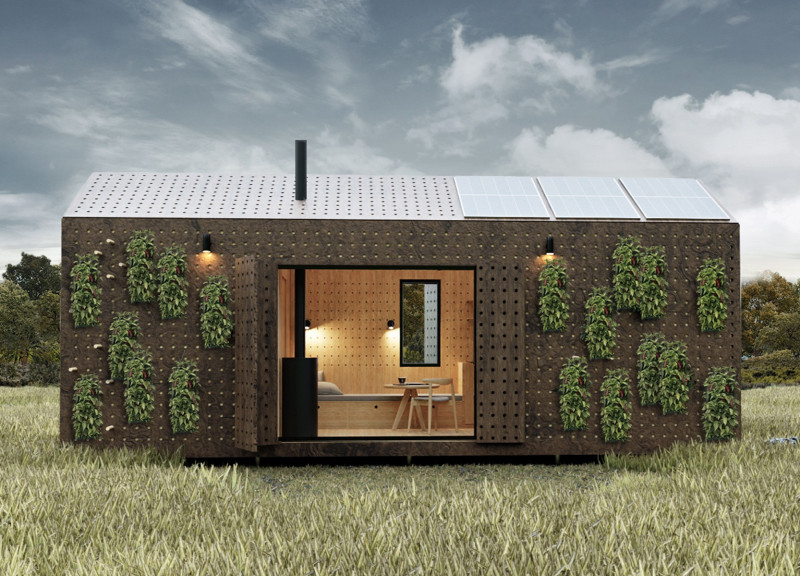5 key facts about this project
The project is designed as a multi-purpose facility, catering to a variety of community functions. Its layout reflects an understanding of the social dynamics of the area, prioritizing accessibility and ease of navigation. The architectural design incorporates open spaces that encourage gatherings and informal meetings, fostering a sense of community. The building’s envelope is crafted to enhance the interaction between indoor and outdoor environments, utilizing expansive glass panels that allow natural light to filter into the interior spaces, creating an inviting atmosphere.
Materiality plays a crucial role in the project’s design philosophy. The architects opted for sustainable, locally sourced materials, which not only reduce the carbon footprint of the construction process but also promote regional craftsmanship. The main façade is characterized by a harmonious combination of warm timber cladding and durable concrete, establishing a visual connection to the natural surroundings while ensuring the longevity of the structure. Additionally, the presence of green roofing elements and vertical gardens embodies an integration of nature within the urban fabric, promoting biodiversity and ecological mindfulness.
Unique design approaches are evident throughout the project, particularly in its structural expression and integration of technology. The architects employed innovative construction techniques that minimize waste and optimize energy efficiency. Furthermore, smart building technologies have been incorporated to enhance user experience, from responsive lighting systems that adapt to the time of day to energy management systems that monitor and reduce consumption. These details reflect a commitment to creating a sustainable architecture that considers the future needs of both its occupants and the environment.
The spatial organization within the building is crafted with intentionality, with distinct zones designed for various functions yet fluidly connected to maintain a cohesive experience. Flexible spaces that can be reconfigured for different activities are a hallmark of this project, allowing for adaptability in usage over time. This aspect promotes a dynamic environment where events and classes can evolve based on community needs.
The architectural plans reveal thoughtful attention to detail, illustrated through the thoughtful arrangement of circulation paths, which prioritize user-friendly movement throughout the facility. Architectural sections further accentuate the spatial relationships within the building, showcasing the height variations and interactions between levels that contribute to the overall aesthetic.
The design outcomes of this project reflect a mature understanding of architectural language and its impact on community identity. By carefully considering the surrounding context and integrating local cultural elements into the design narrative, the architects have crafted a space that transcends mere functionality. The building stands as a testament to the importance of architecture in enhancing communal life, demonstrating that well-designed spaces can foster connections between individuals and their environment.
Overall, the architectural project offers an enriching experience for users, characterized by a balance of aesthetic appeal, sustainable practices, and vibrant community engagement. To fully appreciate the depth of this design, interested readers are encouraged to explore the architectural plans, sections, and various designs that illustrate the intricate ideas and solutions that define this innovative project. Engaging with the details further positions the project not only as a functional space but also as a source of inspiration for future architectural endeavors.


 Fabiana Dias Dias,
Fabiana Dias Dias, 























